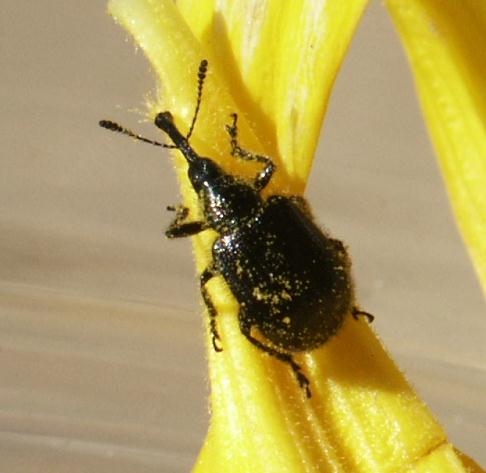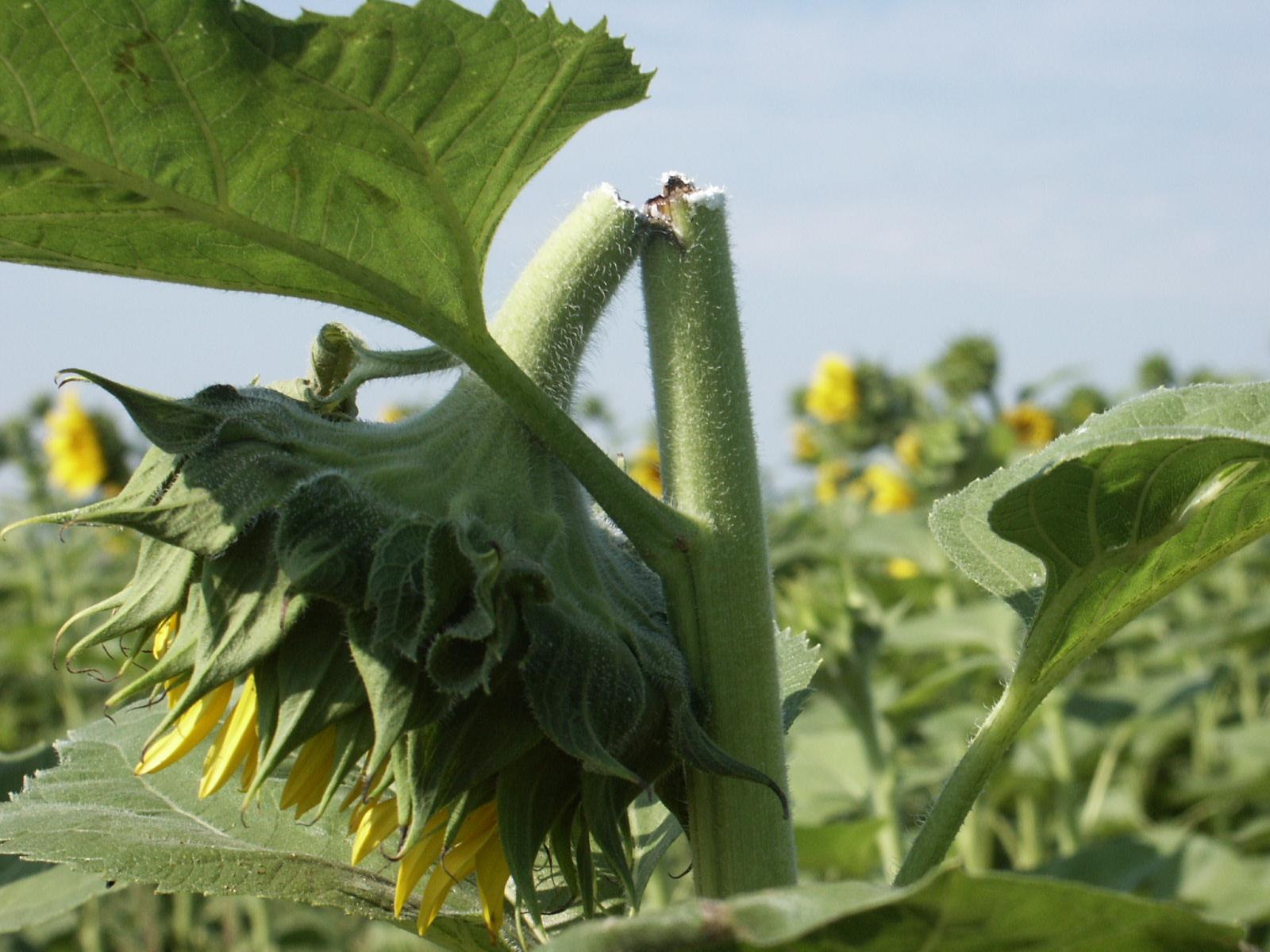Sunflower Insects
Sunflower Headclipping Weevil, Haplorhynchites aeneus

Adult Haplorhynchites aeneus on sunflower petals.

Head severed by adult Haplorhynchites aeneus.
Identification
This is a black weevil about 1.0 cm (1/3 inches) long with a long, curved snout and relatively soft wing covers. Diagnosis is most easly made by the distinctive form of the plant damage. Adults girdle flower peduncles and leaf petioles leaving partially severed flowers or leaves hanging on the plant. When severed flower heads are opened, they often reveal mating aggregations of adult weevils covered in pollen.
Life History and Behavior
There is only one generation per year, the adults typically appearing on sunflowers as they approach reproductive stages in July. Weevils sometimes sever leaf petioles if flower buds are not yet available. Only females are thought to perform the clipping behavior. Weevils spend a lot of time and energy severing heads and this behavior may function to reduce its suitability for other flower-feeding insects that might otherwise compete with larvae for the resource. Weevil pairs can frequently be found mating and feeding on pollen within the severed heads while they remain hanging from the plant. Eggs are laid in the hanging head but are thought to hatch only after the head falls to the ground. Developing larvae feed on the decomposing tissues, eventually leaving the head to overwinter in the ground as mature larvae. Pupation and emergence of adults occurs the following summer.
Management
This insect usually affects only a small proportion of plants within a field, typically within border rows, and rarely warrants treatment. However, in Kansas it has become sufficiently abundant in some years to cause appreciable yield losses. Treatment should be considered if 10% or more of flower heads have been clipped and adult weevils are still active within the field. Applications directed at sunflower moth will normally afford some control of head-clipping weevils. If treatment is necessary for head-clippers specifically, follow material recommendations for sunflower moth but target the backs of flower heads for coverage, rather than the flower faces.
Please refer to the most recent Sunflower Insect Management Guide for specific control recommendations.
Page last updated 10/02/2013 by J.P. Michaud.